
Gdynia is a city in northern Poland and a seaport on the Baltic Sea coast. With an estimated population of 257 000, it is the 12th-largest city in Poland and the second-largest in the Pomeranian Voivodeship after Gdańsk. Gdynia is part of a conurbation with the spa town of Sopot, the city of Gdańsk, and suburban communities, which together form a metropolitan area called the Tricity (Trójmiasto) with around one million inhabitants.

Harland & Wolff is a British shipbuilding and fabrication company headquartered in London with sites in Belfast, Arnish, Appledore and Methil. It specialises in ship repair, shipbuilding and offshore construction.

The 1970 Polish protests, also known as the December 1970 Events, occurred in northern Poland during 14–19 December 1970. The protests were sparked by a sudden increase in the prices of food and other everyday items while wages remained stagnant. Strikes were put down by the Polish People's Army and the Citizen's Militia, resulting in at least 44 people killed and more than 1,000 wounded.

HMS Challenger was a Royal Navy diving support vessel, operational from 1984 to 1990.
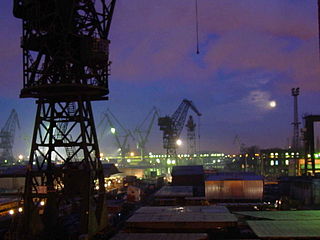
The Gdańsk Shipyard is a large Polish shipyard, located in the city of Gdańsk, northern Poland. The yard gained international fame when Polish trade union Solidarity was founded there in September 1980. It is situated on the western side of Martwa Wisła and on Ostrów Island.

National Steel and Shipbuilding Company, commonly referred to as NASSCO, is an American shipbuilding company with four shipyards located in San Diego, Norfolk, Bremerton, and Mayport. It is a division of General Dynamics. NASSCO owns a subsidiary manufacturing facility with TIMSA in Mexicali, Mexico. The San Diego shipyard specializes in constructing commercial cargo ships and auxiliary vessels for the US Navy and Military Sealift Command; it is the only new-construction shipyard on the West Coast of the United States. NASSCO performs ship repairs and conversions for the United States Navy in all four shipyard locations: San Diego, Norfolk, Bremerton, and Mayport.

Gdańsk Stocznia railway station is a railway station serving the city of Gdańsk, in the Pomeranian Voivodeship, Poland. The station opened in 1867 and is located on the Gdańsk Śródmieście–Rumia railway. The train services are operated by SKM Tricity.
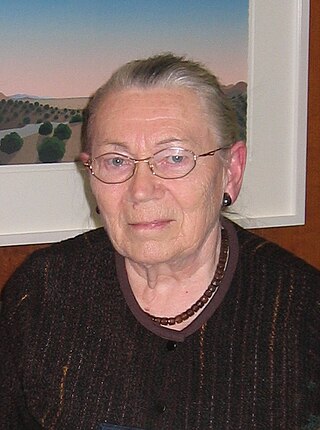
Anna Walentynowicz was a Polish trade unionist and co-founder of Solidarity, the first recognised independent trade union in the Eastern Bloc. Her firing from her job at the Lenin Shipyard in Gdańsk in August 1980 was the event that ignited the strike at the shipyard, set off a wave of strikes across Poland, and quickly paralyzed the Baltic coast. The Interfactory Strike Committee (MKS) based in the Gdańsk shipyard eventually transformed itself into Solidarity; by September, more than one million workers were on strike in support of the 21 demands of MKS, making it the largest strike ever.

Szczecin Shipyard or New Szczecin Shipyard was a shipyard in the city of Szczecin, Poland. Formerly known as Stocznia Szczecińska Porta Holding S.A. or Stocznia im. Adolfa Warskiego. The shipyard specialized in the construction of container ships, Chemical tankers, multi-purpose vessels and ConRo ships. It employed about 4400 people, and the executive director was Andrzej Markowski. It was ISO 9001:2000 certified.

Tomasz Wojciech Misiak is a Polish politician and businessman. He co-founded Work Service, the biggest Polish employment agency and served as a senator, representing Civic Platform.

Davie Shipbuilding is a shipbuilding company located in Lauzon, Quebec, Canada. The facility is now operating as Chantier Davie Canada Inc. and is the oldest continually operating shipbuilder in North America.
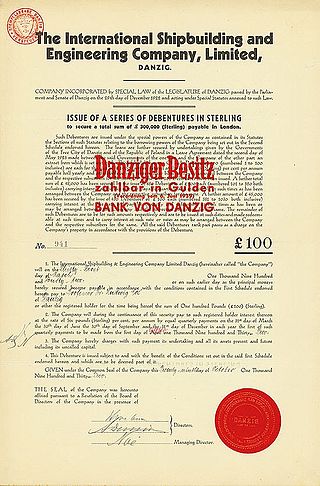
Danziger Werft was a shipbuilding company, in Danzig, in what was then the Free City of Danzig. It was founded in 1921 on the site of the former Kaiserliche Werft Danzig that had been closed after World War I.

Ursus SA was a Polish agricultural machinery manufacturer, headquartered in Lublin, Poland. The company was founded in Warsaw in 1893, and holds a prominent place in Polish tractor production history. It has also carried out some production of trolleybuses in a joint venture with the Ukrainian manufacturer Bogdan, and manufactures buses, coaches, and trolleybuses in a joint venture with Polish manufacturer AMZ Kutno under the name Ursus Bus.
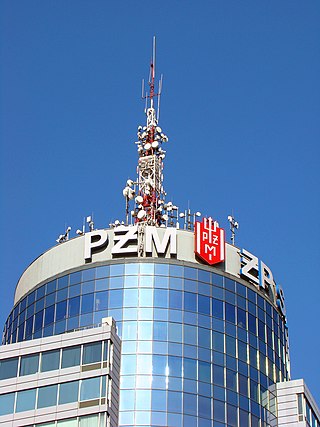
Polska Żegluga Morska known as Polsteam or PŻM, is a cargo ship operator based in Szczecin, Poland. Polsteam is a state-owned enterprise with around 3,000 employees.
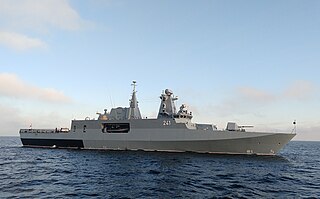
The Gawron class or Projekt 621 was a planned class of multipurpose corvettes ordered by Polish Navy. The Gawron class was a variant of the MEKO A-100 project developed by the Blohm + Voss shipyard in Germany. Construction of the first ship of the class started in 2001. The project was terminated in February 2012 but in October 2013 a contract was signed to complete the existing hull as a patrol ship by 2016. On 2 July 2015, ORP Ślązak was christened and launched, and on 28 November 2019, ORP Ślązak was officially commissioned into the Polish Navy.
The improved Grom-class destroyers of 1939 were the third and fourth planned ships of the Grom class of destroyers ordered for the Polish Navy shortly before World War II. They were to be built in Poland, the first destroyers so constructed, and were to be named Huragan ("hurricane") and Orkan ("windstorm"), respectively. Their design included greater power and displacement than the first two ships of the class. Their construction was interrupted by the beginning of World War II and they were never completed.

Polish Navy Shipyard is a Polish shipyard located in Gdynia. It is the oldest operating shipyard in Poland.

ORP Ślązak (241) is an offshore patrol vessel of the Polish Navy, formerly known as Gawron-class corvette. The ship is named Ślązak. It is a licence variant of the MEKO A-100 project developed by Blohm + Voss.

Castor was a Polish tugboat from the interwar period, initially serving in the Polish Navy and later in civilian service. The vessel was built in 1917 at a German shipyard in Kaliningrad and was purchased by Poland in the spring of 1920. Between 1920 and 1922, it served in the Polish Navy before being transferred to civilian use. During World War II, the tugboat operated under the flag of the Third Reich, but after the war, it returned to Poland. The vessel was decommissioned in 1955 and scrapped in 1958. Castor and Pollux, acquired at the same time, were the first tugboats in the Polish fleet.


















